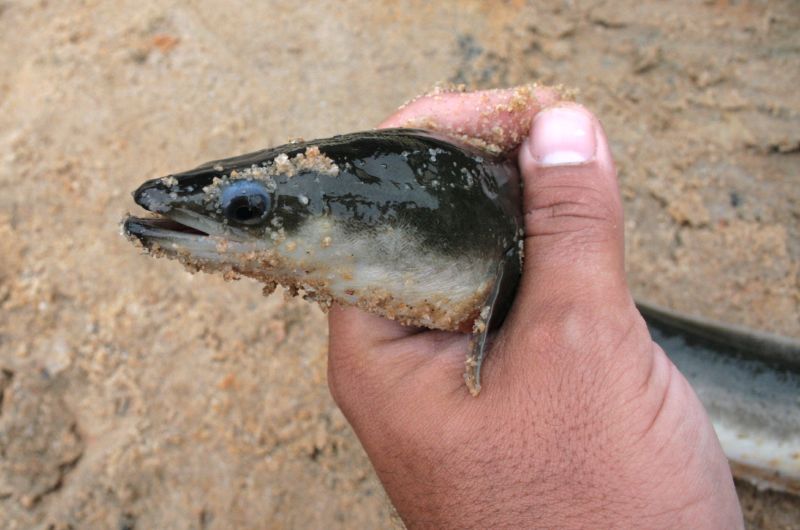
The American eel has become one of the latest species to be deemed ‘at risk of extinction in the wild’ by the International Union for Conservation of Nature.
The IUCN added the American eel to its Red List after discovering populations had dropped by 50 percent in the past several decades. It’s not the only eel species at risk; the Japanese eel and the European eel are also facing diminishing populations.
Experts suspect that American eel numbers are plummeting in response to high demand from Asian markets. In 2010, the European Union banned exports of European eels. In 2011, a tsunami decimated eel stocks in Japan. As a result, demand for the American eel has skyrocketed. Some eels are destined for the dinner plate; others are poached to provide seed stock for Asia’s eel farming industry.
American eel conservation efforts are in their infancy. In Maine, where glass eel fishing is a multimillion dollar industry, quotas were put into place for the first time just last year. Glass – or juvenile – eels can sell to Asian dealers for as much as $2,600 per pound.
Experts suspect it’s not just fishing. Dams can disrupt American eel migration routes and factors like pollution and emerging parasites are also a problem. Climate change is another concern; eels rely on consistent ocean currents to transport their young from their birthing grounds to inland freshwater habitats.
Effective eel conservation will require determining which threats are most significant and reversible.
**********
.
Web Links
American Eel Is in Danger of Extinction
Pacific bluefin tuna, American eel listed as endangered species
Photo, posted September 23, 2009, courtesy of Clinton & Charles Robertson via Flickr.
.
Earth Wise is a production of WAMC Northeast Public Radio, with script contribution from the Cary Institute of Ecosystem Studies.